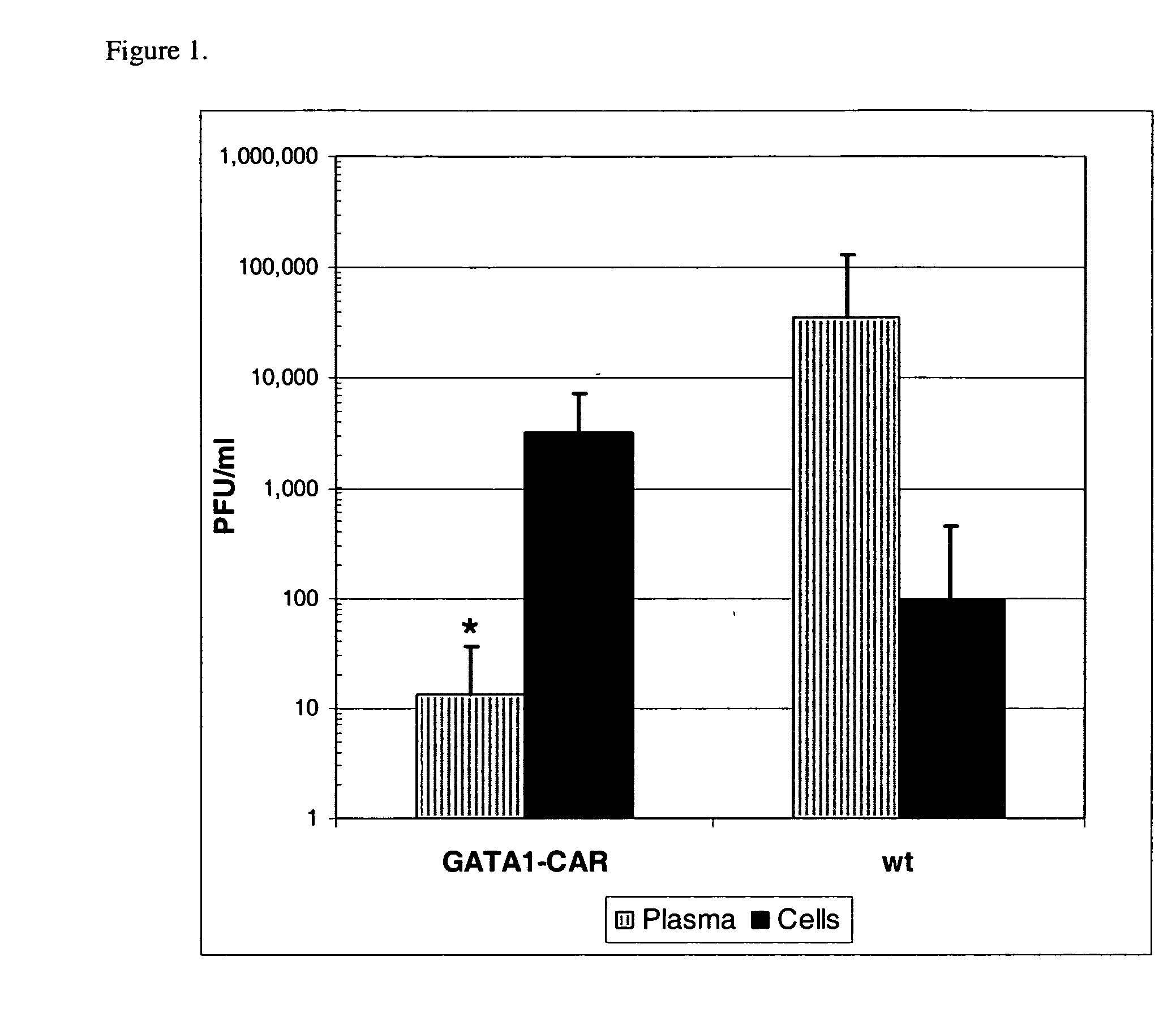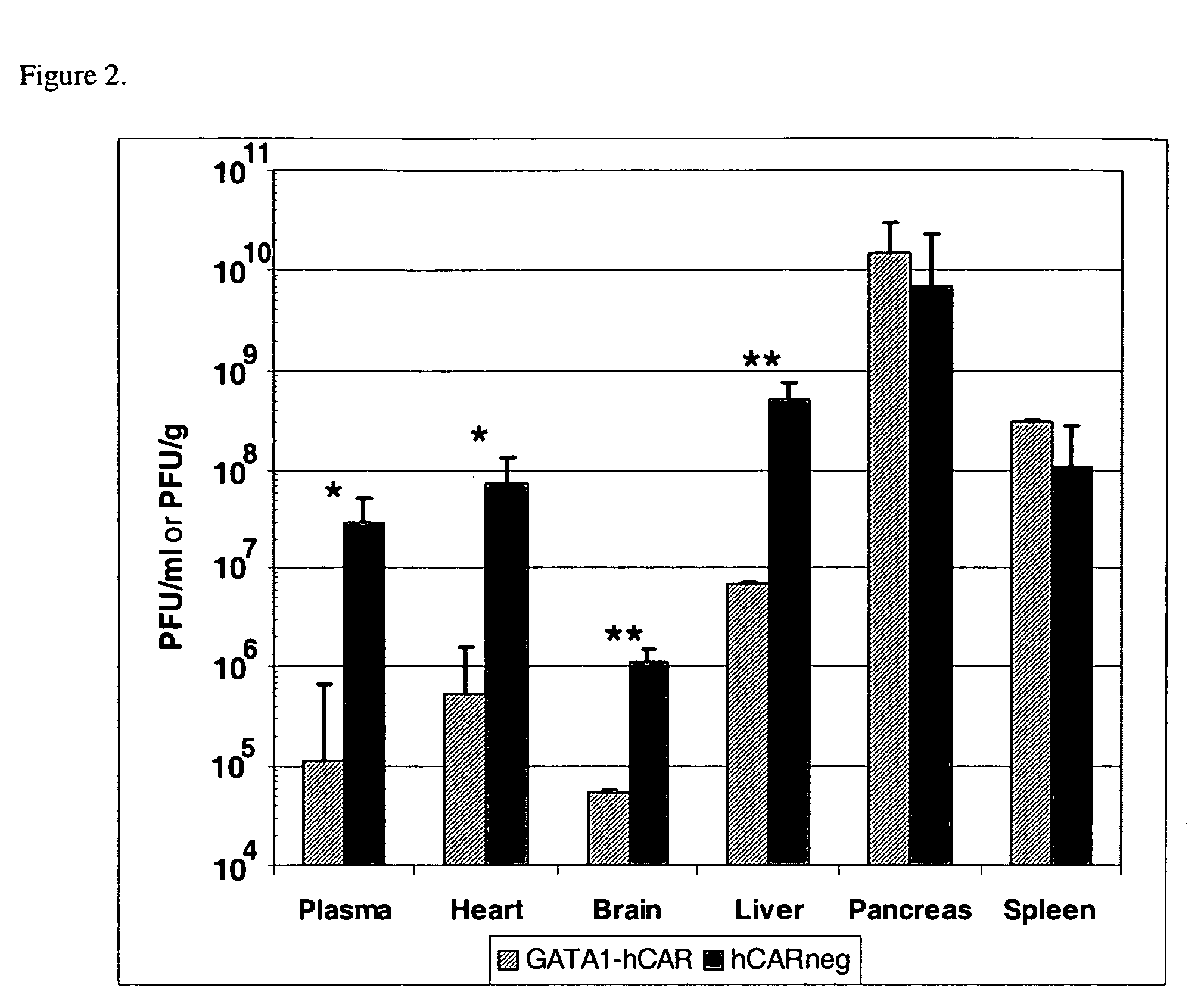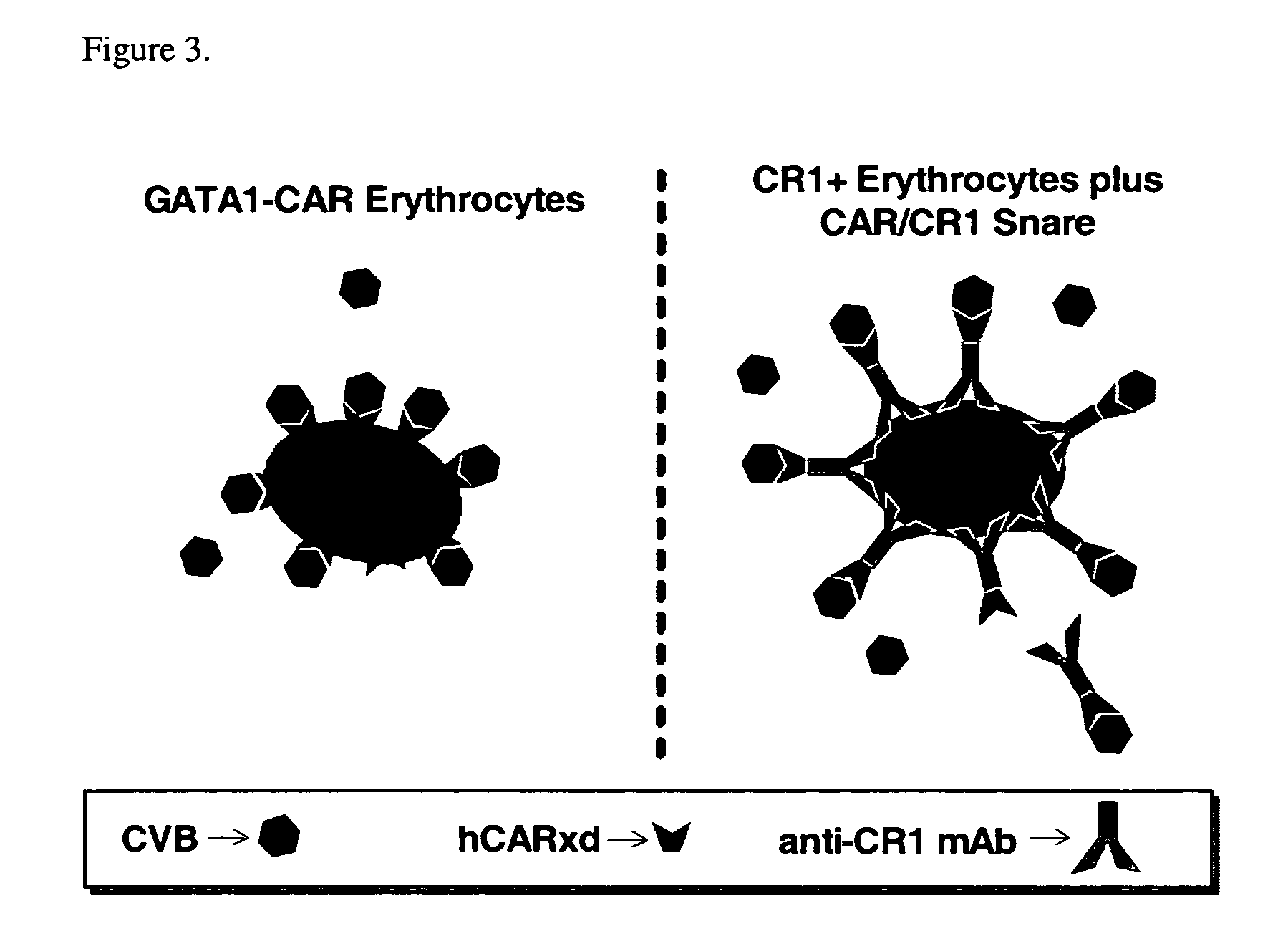Snares for pathogenic or infectious agents and uses related thereto
a pathogenic or infectious agent and snare technology, applied in the field of snares for pathogenic or infectious agents, can solve the problems of inability to completely eliminate soluble receptors, inability to be expected to persist for a long time, and ineffective removal of immune complexes, etc., to facilitate attachment or expression, facilitate the binding of pathogenic or toxic agents, and reduce pathogenicity, toxicity, and/or infectiousness of agents
- Summary
- Abstract
- Description
- Claims
- Application Information
AI Technical Summary
Benefits of technology
Problems solved by technology
Method used
Image
Examples
example 1
Reduction in pathogenesis of Coxsackievirus B3 in mice bearing human Coxsackievirus and Adenovirus Receptor (CAR) on erythrocytes
[0169] Mice expressing human Coxsackievirus and Adenovirus Receptor (CAR) under the control of GATA1 were made. Briefly, an expression plasmid for the CAR gene was constructed. This fragment was inserted into the unique Not I site of plasmid pGATA-1, placing CAR under the transcriptional control of the erythroid specific promoter GATA1 (Visvader et al. Genes Dev. 12, 473-479). Orientation of the CAR gene was confirmed by sequencing. The vector was microinjected into fertilized oocytes harvested from F1 intercrosses of SJL×C57BL / 6 mice. Following microinjection, the oocytes were implanted into pseudopregnant SW female mice. The resulting progeny were screened for integration of the transgene by PCR using mouse-tail DNA and flow cytometric analysis of erythrocytes for CAR expression. The mouse line was maintained by mating with C57BL / 6 mice. In all experime...
example 2
GATA1-CAR erythrocytes bound and neutralized multiple CVB serotypes
[0172] In vitro experiments established that CVB adhered to CAR expressed by GATA1-CAR erythrocytes, and that this interaction abolished viral infectivity. To test for receptor binding, CVB type 4 was incubated with blood or lymphocytes drawn from GATA1-CAR or wild-type mice. Anti-CVB4 monoclonal antibody (mAb) subsequently stained only GATA1-CAR erythrocytes, indicating that virus had adhered to the surface of these blood cells. Furthermore, exposure to the GATA1-CAR erythrocytes rendered multiple serotypes of the virus noninfectious. CVB3 incubated with GATA1-CAR erythrocytes rapidly lost infectivity, with a ten-fold reduction within 10 minutes and nearly complete neutralization by 1 hour. GATA1-CAR erythrocytes also curtailed CVB4 infectivity, albeit at a slower rate, achieving almost 90% inhibition by one hour. The level of CVB4 inhibition achieved by the CAR-expressing erythrocytes was ultimately equivalent to ...
example 3
GATA1-CAR erythrocytes improved survival of infected mice
[0173] Suppression of infection by erythrocyte-expressed CAR enabled GATA1-CAR mice to survive a CVB3 challenge that was invariably lethal to wild-type animals. A 4×103 PFU / mouse dose of CVB3 given to wild-type mice caused 50% mortality by day 5 post-infection and left no survivors by day 7. The GATA1-CAR mice were much more resilient, with no deaths before day 7 and 50% survival until the final time point at day 14. The mice that survived had resolved most outward signs of sickness such as altered posture, ruffled fur, and lethargy by the end of the experiment and maintained only a very low level of viremia (mean 350±300 PFU / ml whole blood).
PUM
| Property | Measurement | Unit |
|---|---|---|
| surface | aaaaa | aaaaa |
| cell surface | aaaaa | aaaaa |
| RH | aaaaa | aaaaa |
Abstract
Description
Claims
Application Information
 Login to View More
Login to View More - R&D
- Intellectual Property
- Life Sciences
- Materials
- Tech Scout
- Unparalleled Data Quality
- Higher Quality Content
- 60% Fewer Hallucinations
Browse by: Latest US Patents, China's latest patents, Technical Efficacy Thesaurus, Application Domain, Technology Topic, Popular Technical Reports.
© 2025 PatSnap. All rights reserved.Legal|Privacy policy|Modern Slavery Act Transparency Statement|Sitemap|About US| Contact US: help@patsnap.com



